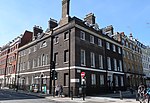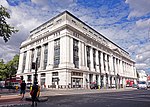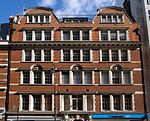Bloomsbury Square
Bedford EstateBloomsburyGarden squares in LondonGrade II listed parks and gardens in LondonJames Burton (property developer) buildings ... and 1 more
Squares in the London Borough of Camden

Bloomsbury Square is a garden square in Bloomsbury, in the London Borough of Camden, London. Developed in the late 17th century, it was initially known as Southampton Square and was one of the earliest London squares. By the early 19th century, Bedford House along the north of the square had been demolished and replaced with terraced housing designed by James Burton.
Excerpt from the Wikipedia article Bloomsbury Square (License: CC BY-SA 3.0, Authors, Images).Bloomsbury Square
Bloomsbury Square, London Bloomsbury (London Borough of Camden)
Geographical coordinates (GPS) Address Nearby Places Show on map
Geographical coordinates (GPS)
| Latitude | Longitude |
|---|---|
| N 51.518888888889 ° | E -0.12277777777778 ° |
Address
Bloomsbury Square Car Park
Bloomsbury Square
WC1B 4JB London, Bloomsbury (London Borough of Camden)
England, United Kingdom
Open on Google Maps










